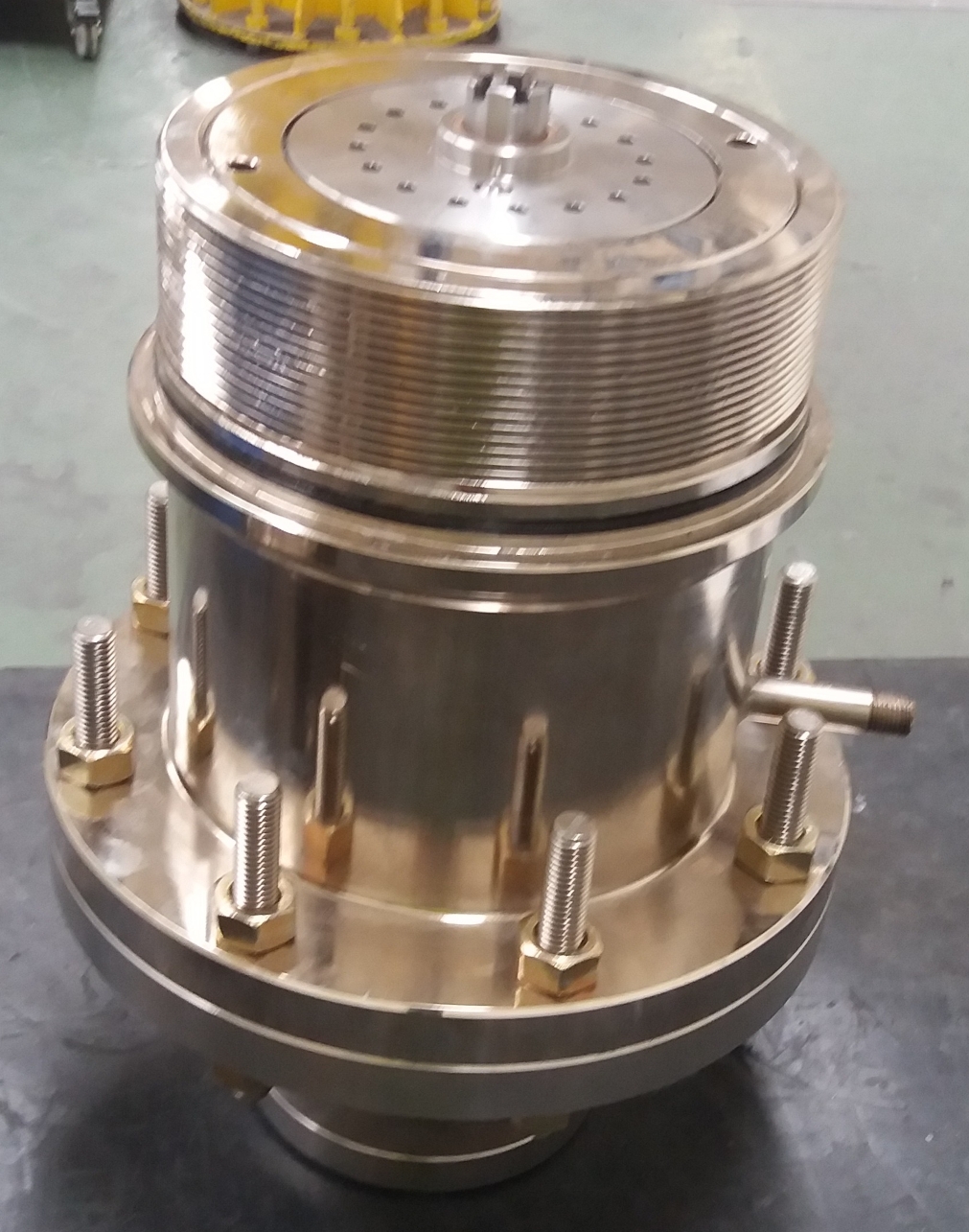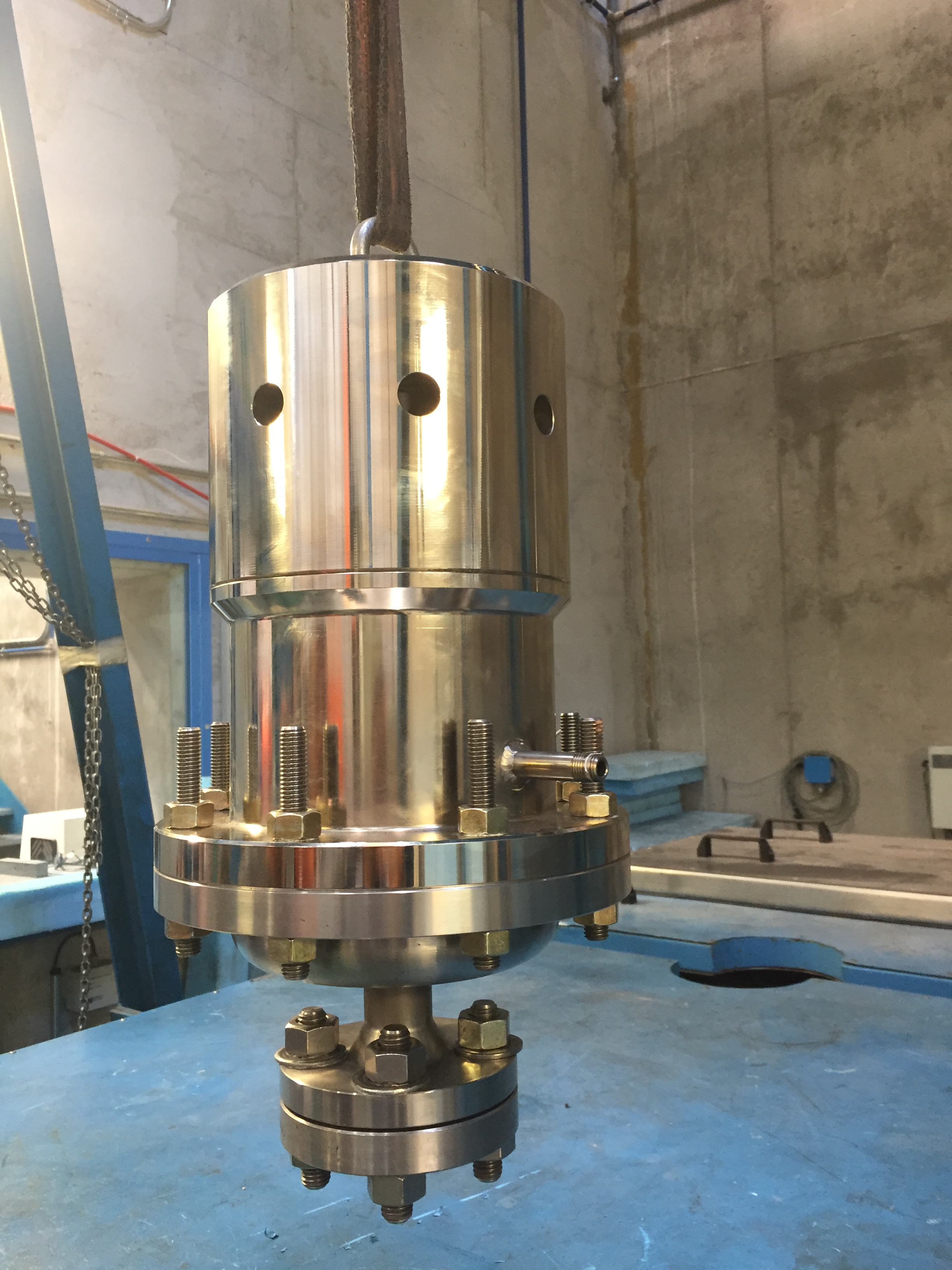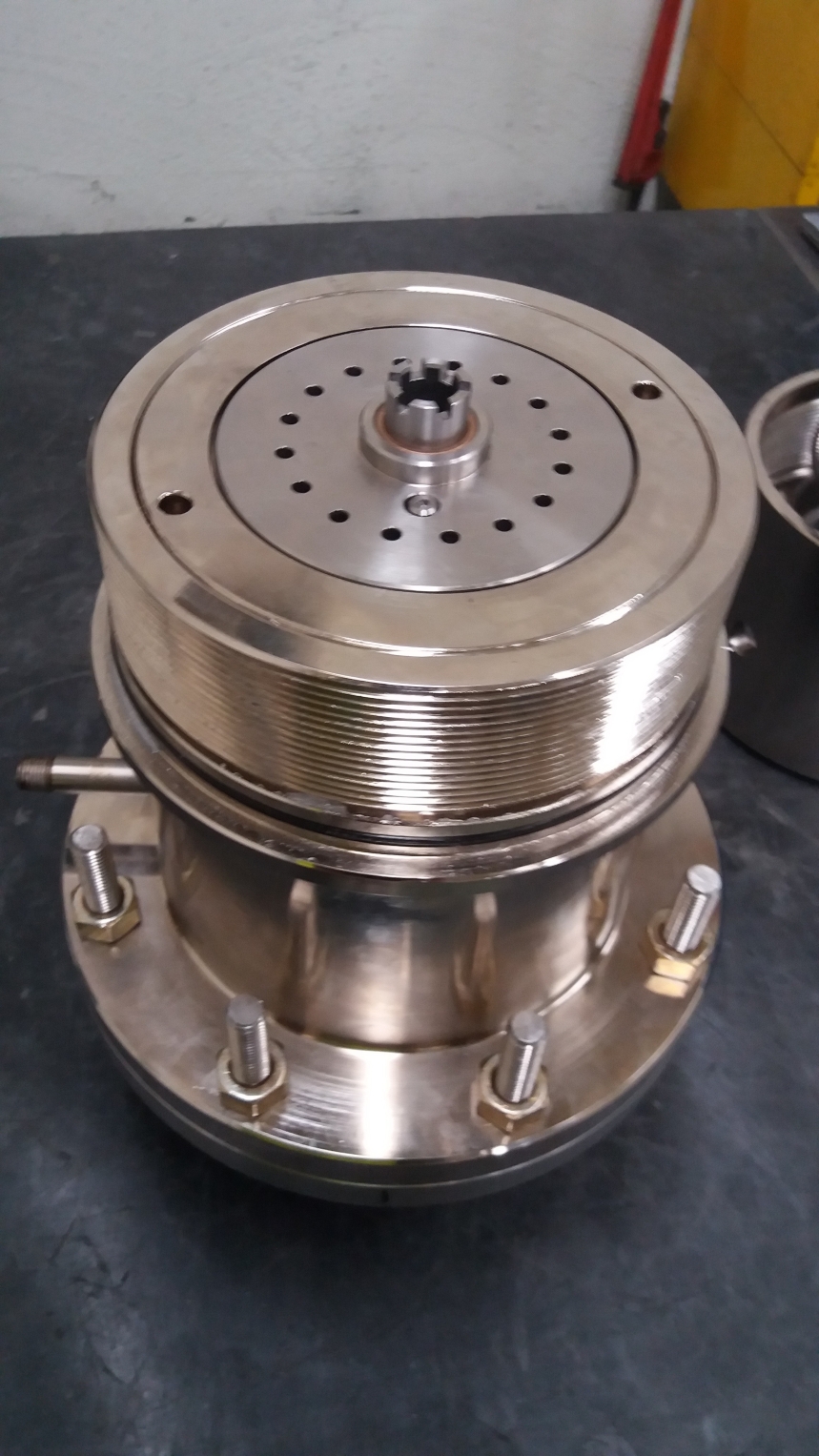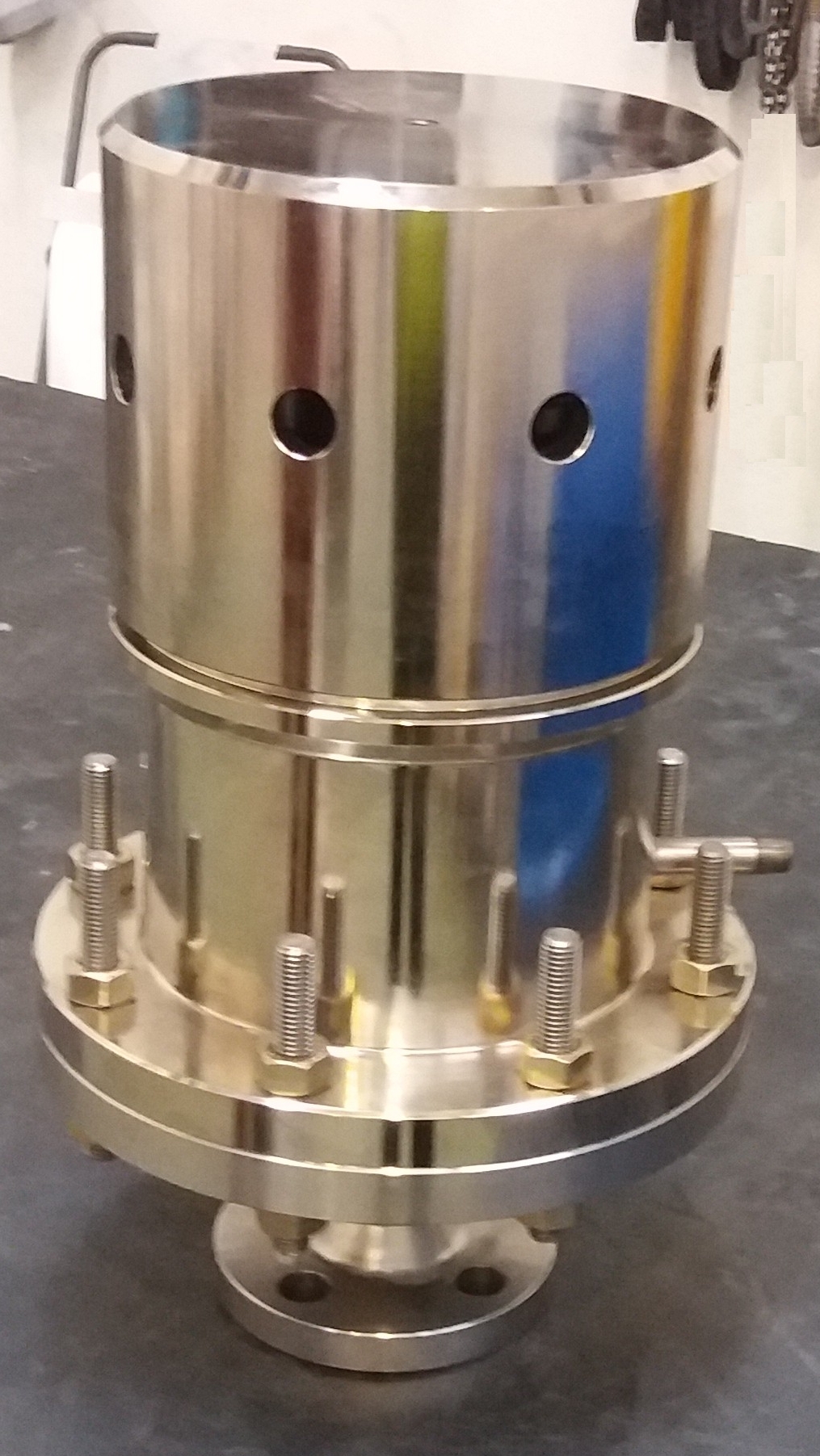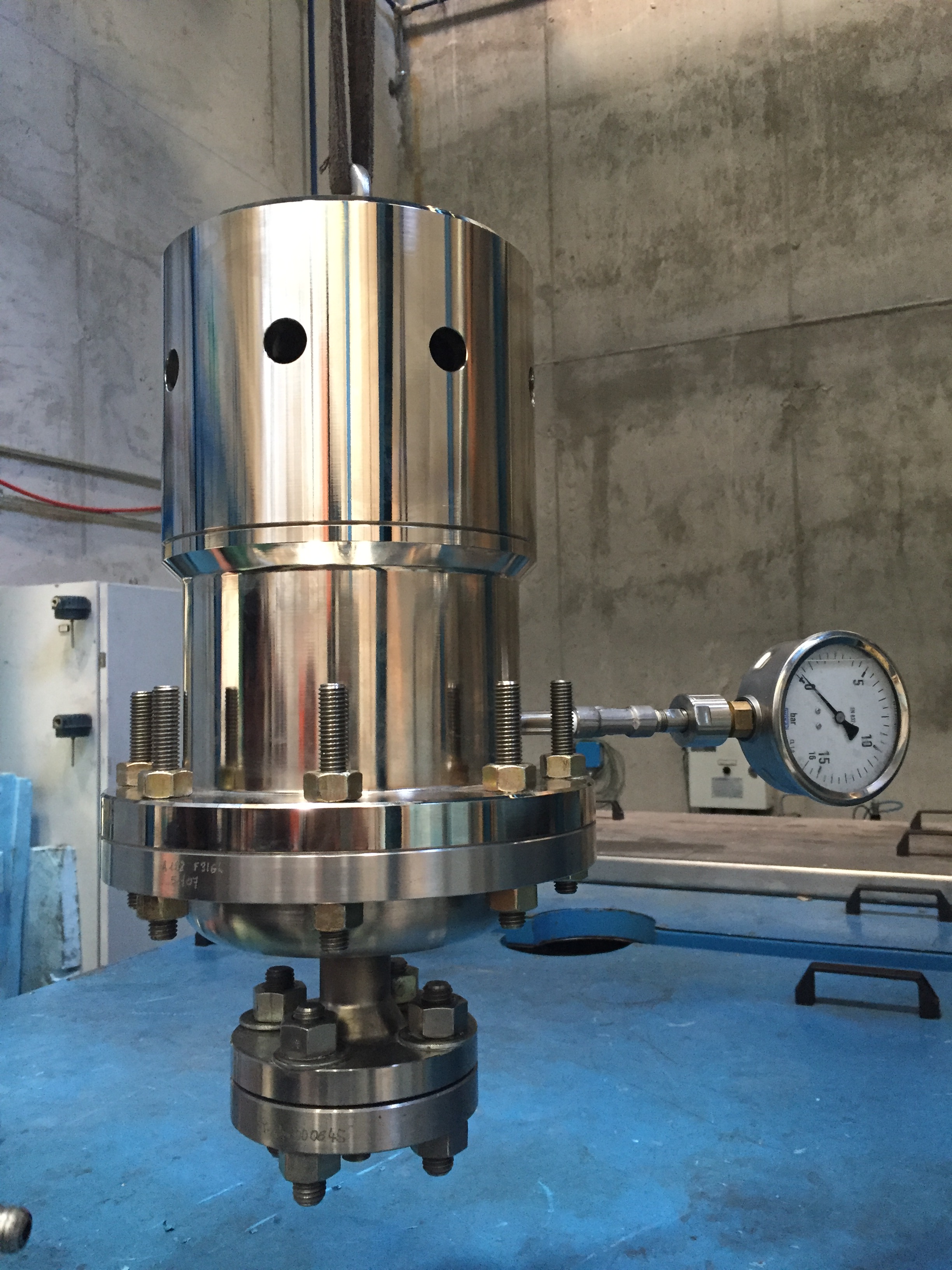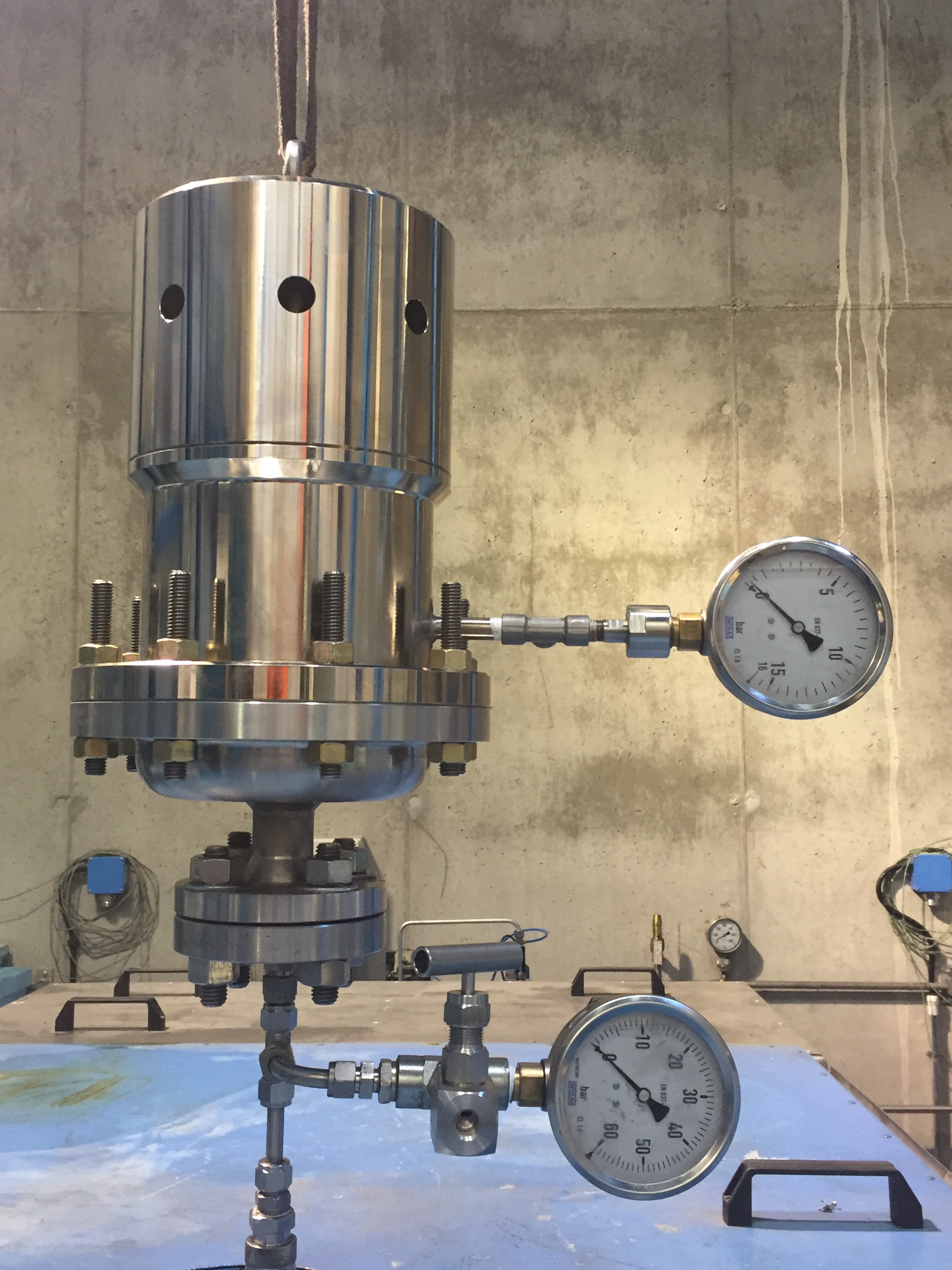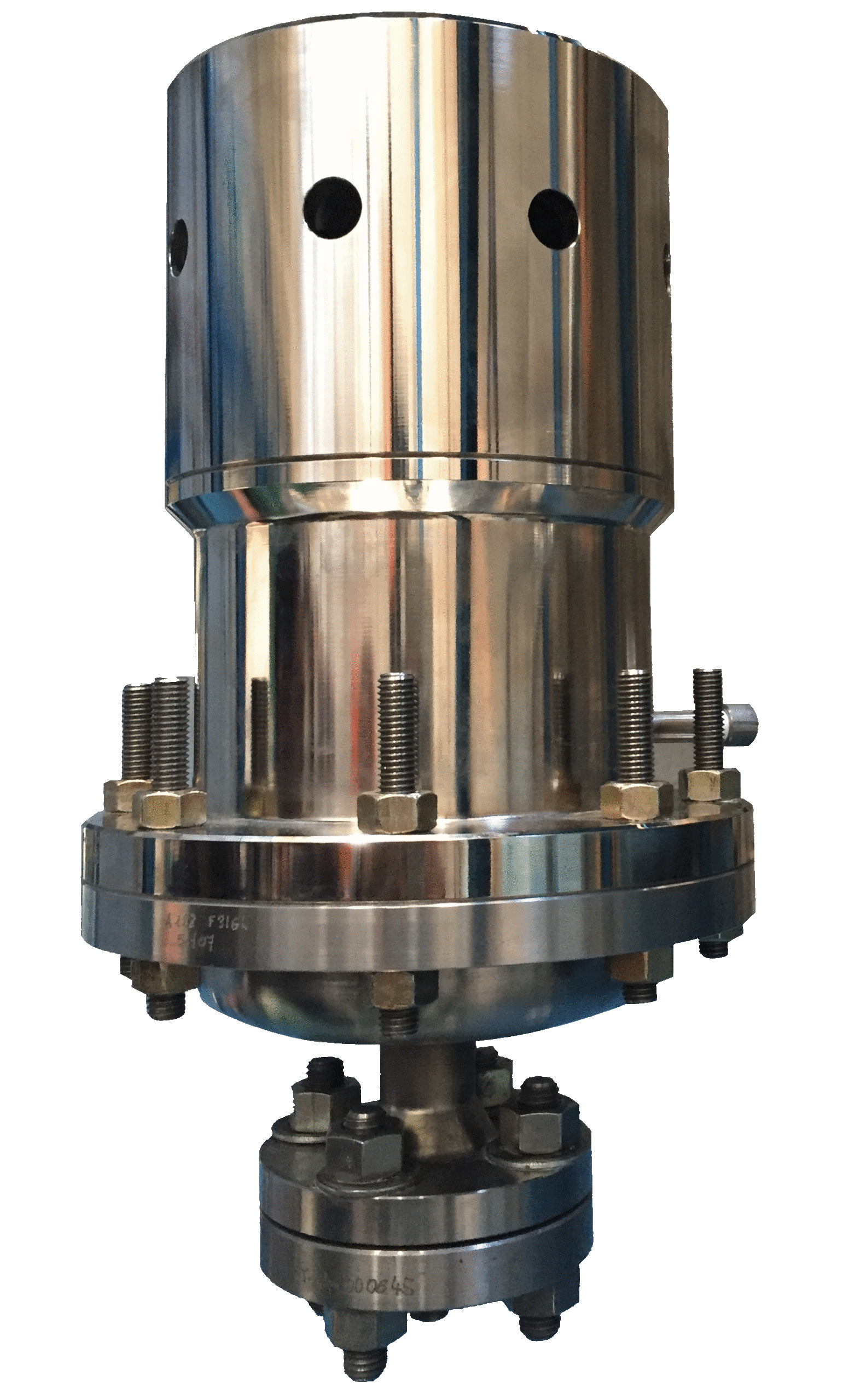THE SOLUTION: ASVAD
Knowing the weakness of the current strategies, we started to develop a new alternative solution to surpass these drawbacks.
We developed the ASVAD safety valve:
• Against the time-critical actions, we make this valve FAST.
• Against using active elements, we make this valve PASSIVE.
• Against needing operators , we make this valve AUTOMATIC.
As the plants have several accumulators, the ASVAD valve has to be installed at each one.
Now, ASVAD resolves the root, so no nitrogen injection will be.
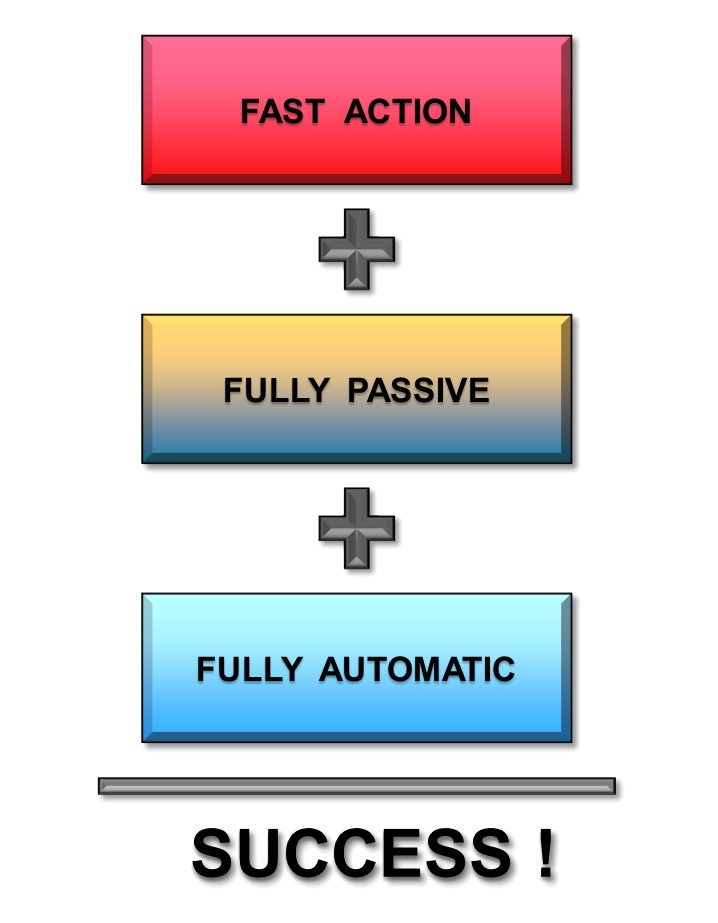
THE SIMPLE SOLUTION
But we were not satisfied with the simple complaint of these weaknesses. We have moved a step forward to find an alternative system that can avoid the nitrogen threat, but without the weaknesses and shortcomings of the current strategies.
The result of this effort has been the design of a new passive element ASVAD which is very similar to a relief valve, but with a reverse operation. This new element does not vent the pressure when a high pressure is exceeded, but it does just when the pressure drops under a certain value.
This valve is installed on the nitrogen side of each accumulator. As it is bearing the internal accumulator pressure, it can detect the end of the water injection and will exhaust the residual nitrogen into the atmosphere before it can reach the reactor pipes.
Basically, the ASVAD valve remains closed while the pressure in the accumulator is normal. Only during the accident, when the accumulator injection starts, as the liquid goes out its nitrogen will expand inside. This implies a continuous drop in the inside pressure. This drop is detected by ASVAD, and when the setpoint is reached, it actuates venting the accumulator.
We have developed this valve, focusing our efforts on achieving the highest levels of confidence in its proper operation. Its simplicity and robustness can withstand the accident evolution, and it will operate under these harsh circumstances.
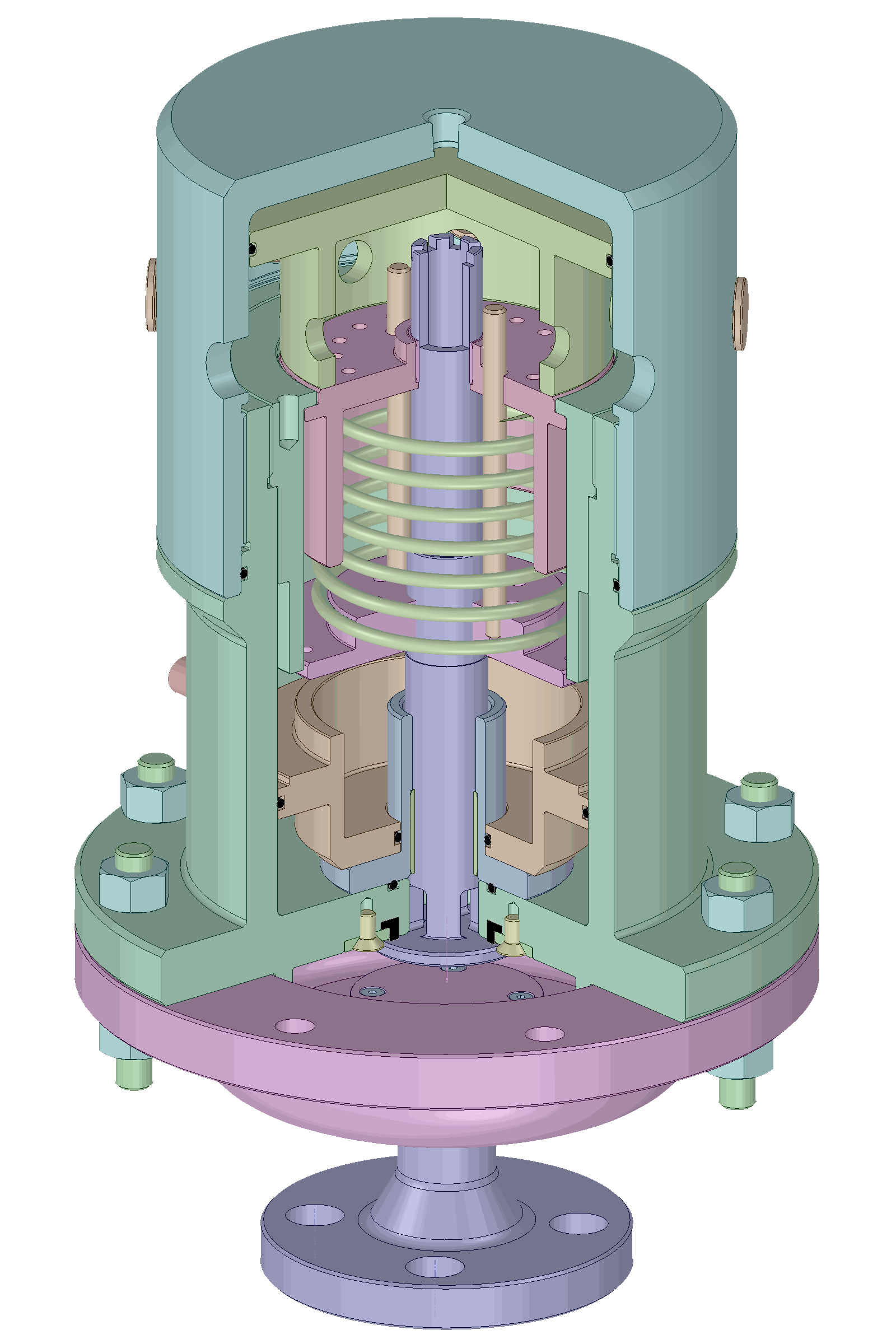
HOW ASVAD WORKS?
ASVAD is a very simple valve. Its main parts are the body that includes a pressurized chamber (1) connected with the accumulator. A preloaded spring (3), that pushes across a threaded disk (4) to a hollow obturator (2) that closes the pressurized chamber (1).
The principle of ASVAD is the imbalance between the closing force done by the accumulator pressure (wide red arrow), and the opening force done by a preadjusted spring (narrow red arrow). While the pressure inside the accumulator remains normal, the valve will remain closed and armed. It will not disturb the normal operation of the accumulator.
But when the accident comes, sooner or later the accumulators will actuate injecting their water into the system. During the water injection, the nitrogen will expand, and the pressure inside the accumulator will drop until a certain value is reached. Then, the opening spring force is enough now to move the obturator away from its seat, opening the path from the pressure chamber to the exhaust ports.
Once this happens, the pressure quickly drops in the pressure chamber, and the obturator reaches its fully opened state. This provides an open path to exhaust all the residual nitrogen in the accumulator, and fully avoids its injection into the Reactor Coolant Circuit.
SO SIMPLE !
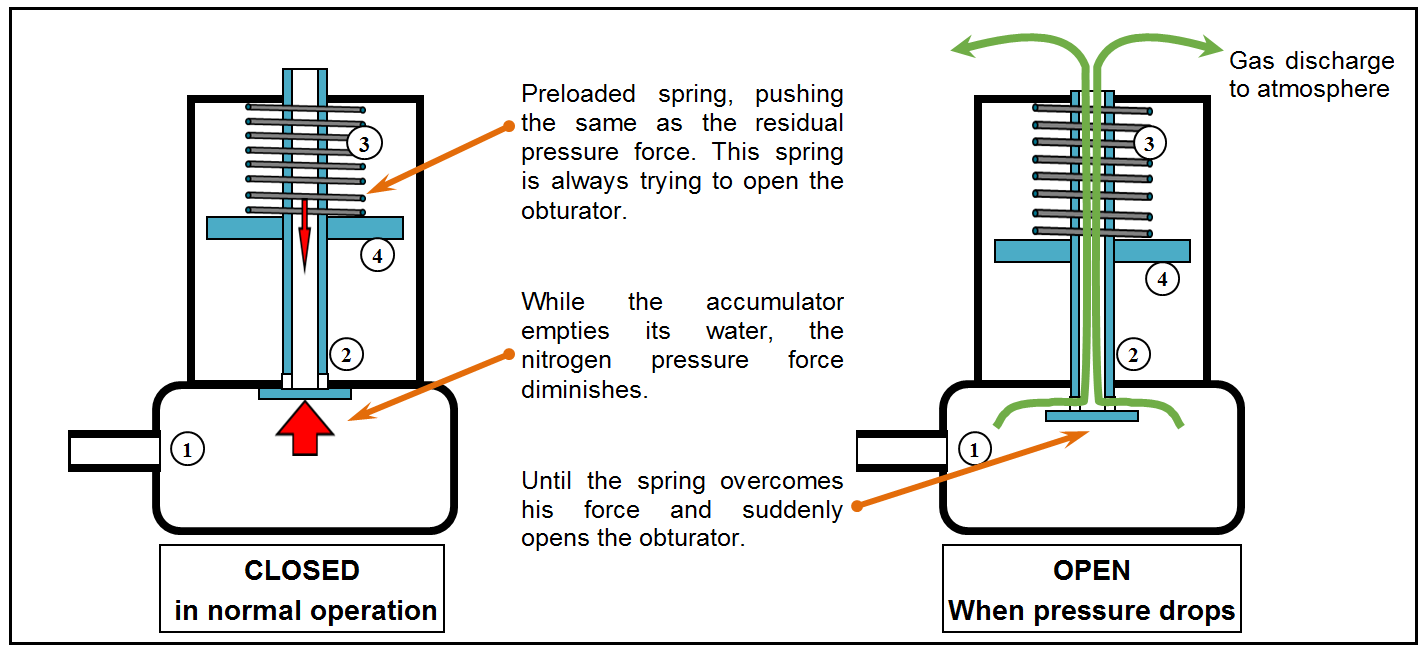
Obviously this is just a simplification to understand its working principle. As you can guess, the ASVAD valve has some added enhancements like :
- Remote pilot option to open the valve unconditionally if needed.
- Remote pilot option to close the valve unconditionally to arm the valve.
- Wide capability to precisely adjust the opening point in a pressure range.
- Self-adapting set point to the ambient situation.
- Self re-closing floater option.
These enhancements are also very SIMPLE. This also makes this valve EXTREMELY RELIABLE.
A SHORT VIDEO ABOUT THE ASVAD VALVE
SOME ASVAD PICTURES
